- Huyett Marketing Department
- 04/19/2021
- Updated 03/07/2024
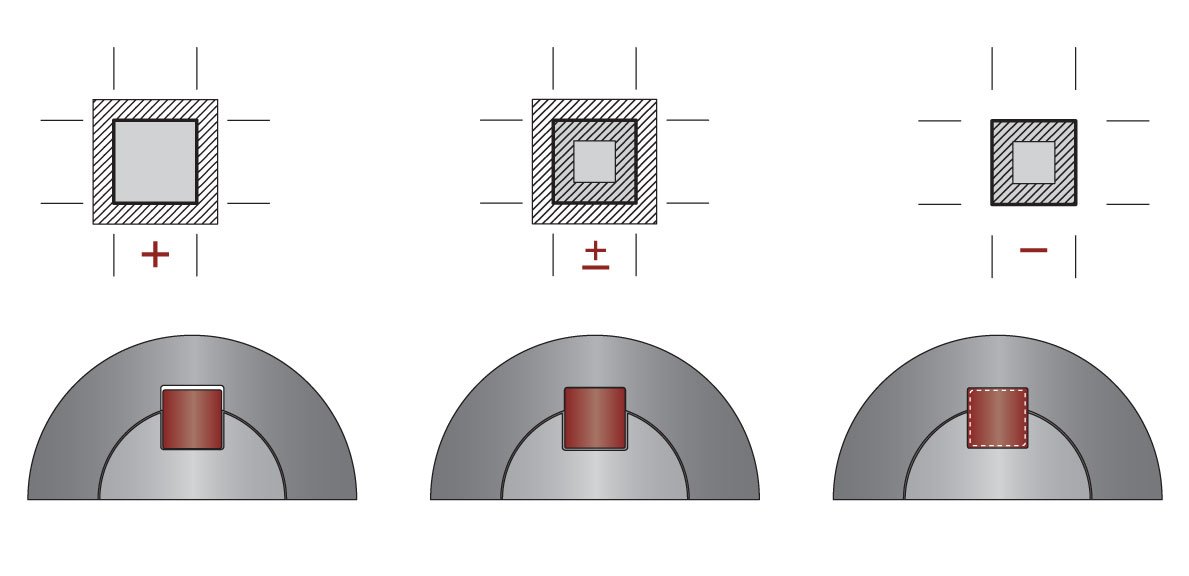
Keystock is an important component in
power transmission systems, in-field repairs, and in machine key manufacturing. The name refers to a bar of metal – this bar could be square, hex-shaped, rectangular, or a variety of other shapes – that is at least one foot long and meets specific tolerances. Along with the size, shape, material (learn more about keystock materials in our selection guide), and finish of the keystock, there are two characteristics of this part that are essential to know:
tolerance
and
fit
(fit classes). These concepts help communicate how the piece will fit into a keyway.
Keystock Tolerance
To put it simply,
tolerance
indicates how a piece of keystock may vary from the listed size. For instance, a part with an “oversize” tolerance will either be the stated nominal size or slightly larger, but it cannot be smaller.
Before the age of the assembly line and interchangeable parts, skilled craftsmen known as "fitters" were required to piece together mating parts. Since the parts were usually hand‑crafted, production was limited to one assembly at a time. The craftsman employed a system of cut, try, cut again, and try again to eventually achieve proper fit between components.
With the advent of the assembly line, it became necessary to supply parts that could be used interchangeably so that any one part could be used to complete the component. Since it is extremely difficult to produce exactly identical parts, a system of tolerances and specifications was developed to determine when parts were close enough to be interchangeable.
Nominal Sizing and Tolerances
As stated above,
tolerance
refers to how much a piece of keystock can deviate from its own nominal size. The deviation can be one of three options:
- Less than the nominal size;
- Greater than the nominal size, or;
- Both
Undersize Tolerance
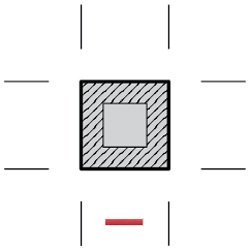
Keystock under this tolerance cannot be larger than the nominal size but may be smaller. There are several types of keystock shapes that are available in an undersize tolerance, all of which have a versatile selection of available materials and finishes (though not every finish is available with every material). They include:
- Hex
- Materials: Brass, carbon and medium carbon steel
- Finishes: Plain and zinc clear
- Rectangular
- Materials: 300 and 400 stainless steel, carbon and medium carbon steel, chrome alloy steel, stainless steel, and copper
- Finishes: Plain, zinc clear, and zinc yellow
- Round
- Materials: 300 series stainless steel, carbon and medium carbon steel, chrome alloy steel, and stainless steel
- Finishes: Plain, zinc clear, and zinc yellow
- Square
- Materials: 300 and 400 stainless steel, carbon and medium carbon steel, chrome alloy steel, copper, monel, and stainless steel
- Finishes: Plain, zinc clear, and zinc yellow
Bilateral Tolerance
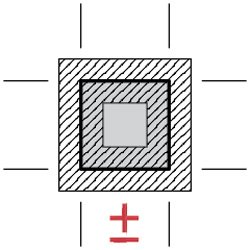
Keystock under this tolerance may be either smaller or larger than the nominal size. Huyett offers rectangular, round, and square bilaterial keystock in a range of materials and sizes. Ensure that the material you select is available with the correct finish, as the list below shows the complete selection and not material and finish pairings.
- Rectangular
- Materials: 300 and 400 stainless steel, aluminum, brass, and high carbon steel
- Finishes: None
- Round
- Materials: 300 stainless steel, aluminum, and brass
- Finishes: None
- Square
- Materials: 300 stainless steel, aluminum, brass, high carbon steel, and nylon
- Finishes: Plain and zinc clear
Oversize Tolerance
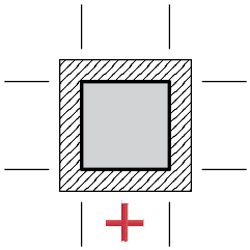
Keystock under this tolerance cannot be smaller than the nominal size but may be larger. This keystock is available in rectangular, square, and step shapes with different materials and finishes. The list below is a complete list of options, but not every material and finish will be available as a pair.
- Materials: 300 stainless steel, carbon and medium carbon steel
- Finishes: Plain and zinc clear
- Materials: 300 and 400 stainless steel; carbon, low, and medium carbon steel; nickel alloy steel, and stainless steel
- Finishes: Passivated, plain, and zinc clear
- Materials: 300 stainless steel and carbon steel
- Finishes: Plain and zinc clear
Keystock Fits and Keyway Fit Classes
When two components are designed to be pieced together with keystock or a machine key, there may be play or looseness between them or they may be tight to the point they are nearly bonded. This degree of tightness or looseness is referred to as "fit." The fit between a shaft, machine key, and the mating component can be critical to the operation and safety of the assembly.
Clearance Fit

In a clearance fit, a space will exist between the two mating parts. The difference in sizes is referred to as a positive difference. The minimum clearance will be the difference between the maximum tolerance of the inserted part and the minimum tolerance of the receiving part.
Loose Fit:
Used in applications that do not require precision, such as pulleys, agricultural equipment, or other applications requiring frequent disassembly.
Running Fit:
This type of clearance fit has just enough space to maintain a film of lubrication between the mating parts. Most bearings will require this type of fit.
Slide Fit:
Also known as a medium fit, this fit is used when precision is required. It is used on slides, slide valves, and some automobile part assemblies.
Transition Fit
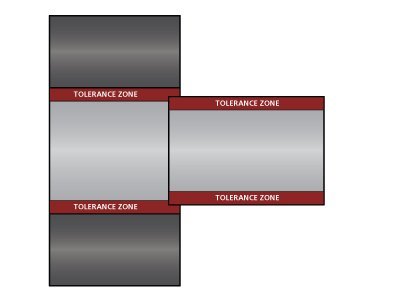
In a transition fit, a space may exist, or the parts may collide. If the inserted part is at maximum tolerance and the receiving part is at minimum tolerance an interference will occur. However, a clearance fit will result if the inserted part is at minimum tolerance and the receiving part is at maximum tolerance.
Push Fit:
Also known as a snug fit, this fit has zero allowance between the mating parts and will require a slight pressure to install. This is a good fit where vibration may be encountered.
Shrink/Force Fit:
This fit is required when the two mating parts are to be rigidly fixed so that they move together. It will require high pressure or expansion by heating to install.
Wringing Fit:
A small negative allowance is allowed between the two mating parts requiring pressure to assemble. It is used on flushed bolts, driven bushings, and electric motors.
Interference Fit
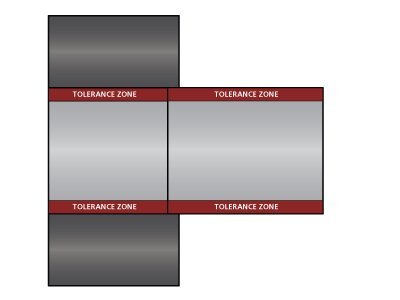
In an interference fit, the tolerance zones of both parts will collide with each other regardless if they are at minimum or maximum. The degree to which they collide will determine the strength of the fit. An interference fit will require either force or temperature change to facilitate installation.
Shrink Fit:
Also known as a heavy force fit, the receiving part is heated to cause expansion allowing the inserted part to fit. This is commonly used in rims and heavy duty assemblies such as railway wheels.
Medium Force Fit:
With this fit, a substantial amount of pressure is required to force the parts together. This is used for car wheels, dynamo armatures, and other semi‑permanent joins.
Tight Fit:
Also known as press fit, the parts can be mated by hand with a hammer or light pressure. It is used in keyed pulleys, rocker arms, and applications not requiring a large force.
ANSI B17.1 Keyway Fit Classes
Fit classes are the class designations that communicate how a key and a keyway will fit together. They are similar to the clearance, transition, and interference fits; however, the classes are designated by ANSI B17.1.
Class 1 Fit
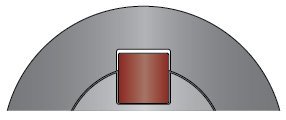
Sometimes called a clearance fit, the key width will be slightly smaller than the keyway allowing the shaft and component piece to slide over each other.
Class 2 Fit
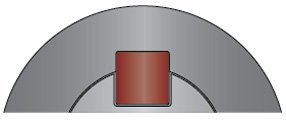
Also known as a transition fit, the key width and the keyway can have a slight clearance fit or a slight interference fit. Generally this fit is sufficient to hold mating parts together while still allowing for disassembly.
Class 3 Fit
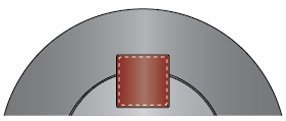
This is an interference fit, meaning the key will be larger than the keyway and will encounter interference during installation. Some means of force or the use of temperature differential is required for installation. ANSI B17.1 does not have specific standards for this class of fit.
Each application will determine the type of fit required. Should it be a loose fit for easy disassembly? Does it need to precisely hold a component in place? Is it a bearing joint that requires movement? Will it be a semi‑permanent bond? Additionally, the dimensional tolerances of a given part must be taken into account when determining the correct fit for an application.
Have Questions?
If you have any questions about
keystock,
machine keys,
custom manufacturing, or other industrial fastener needs,
contact our friendly Sales Team today!

